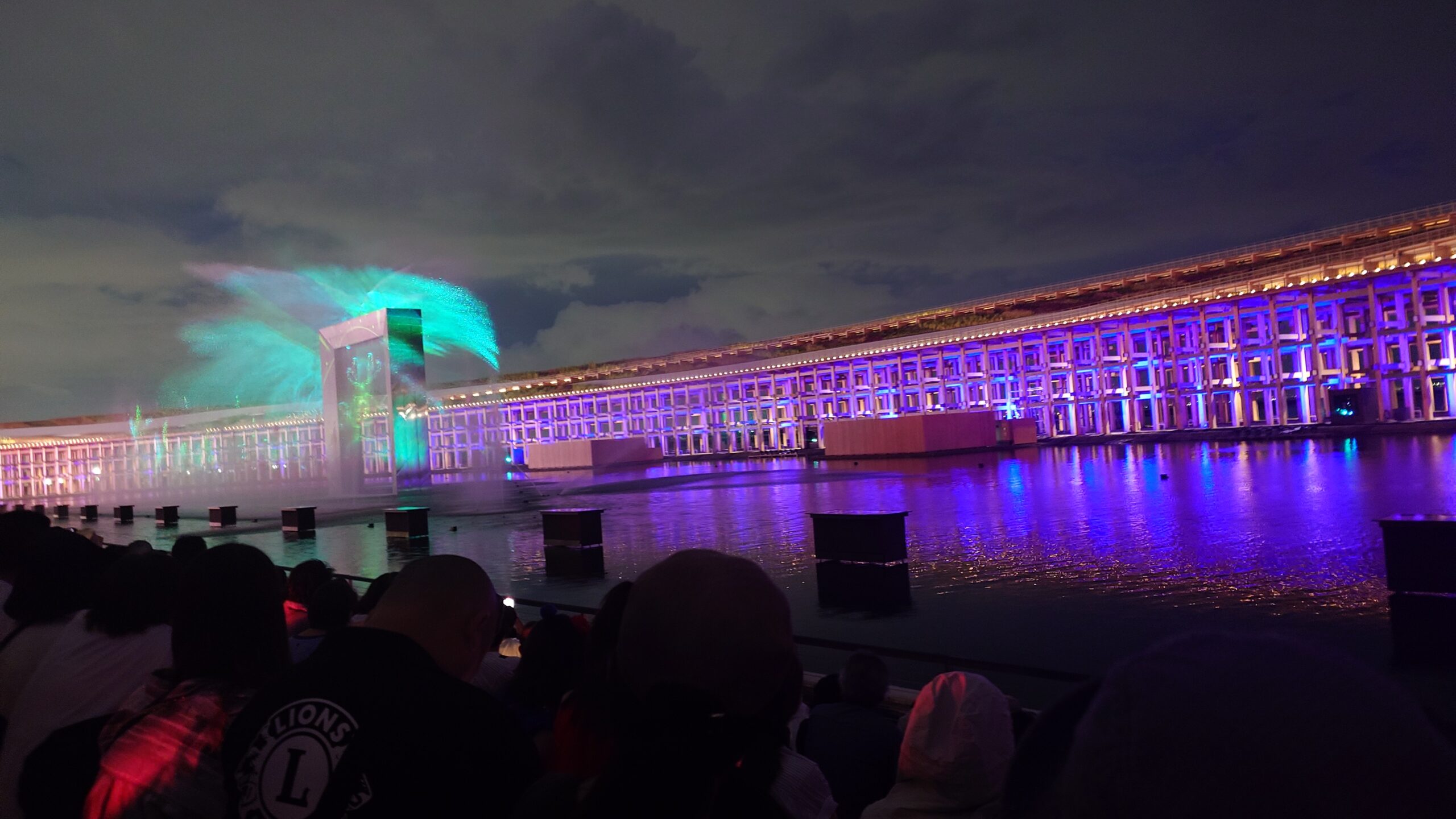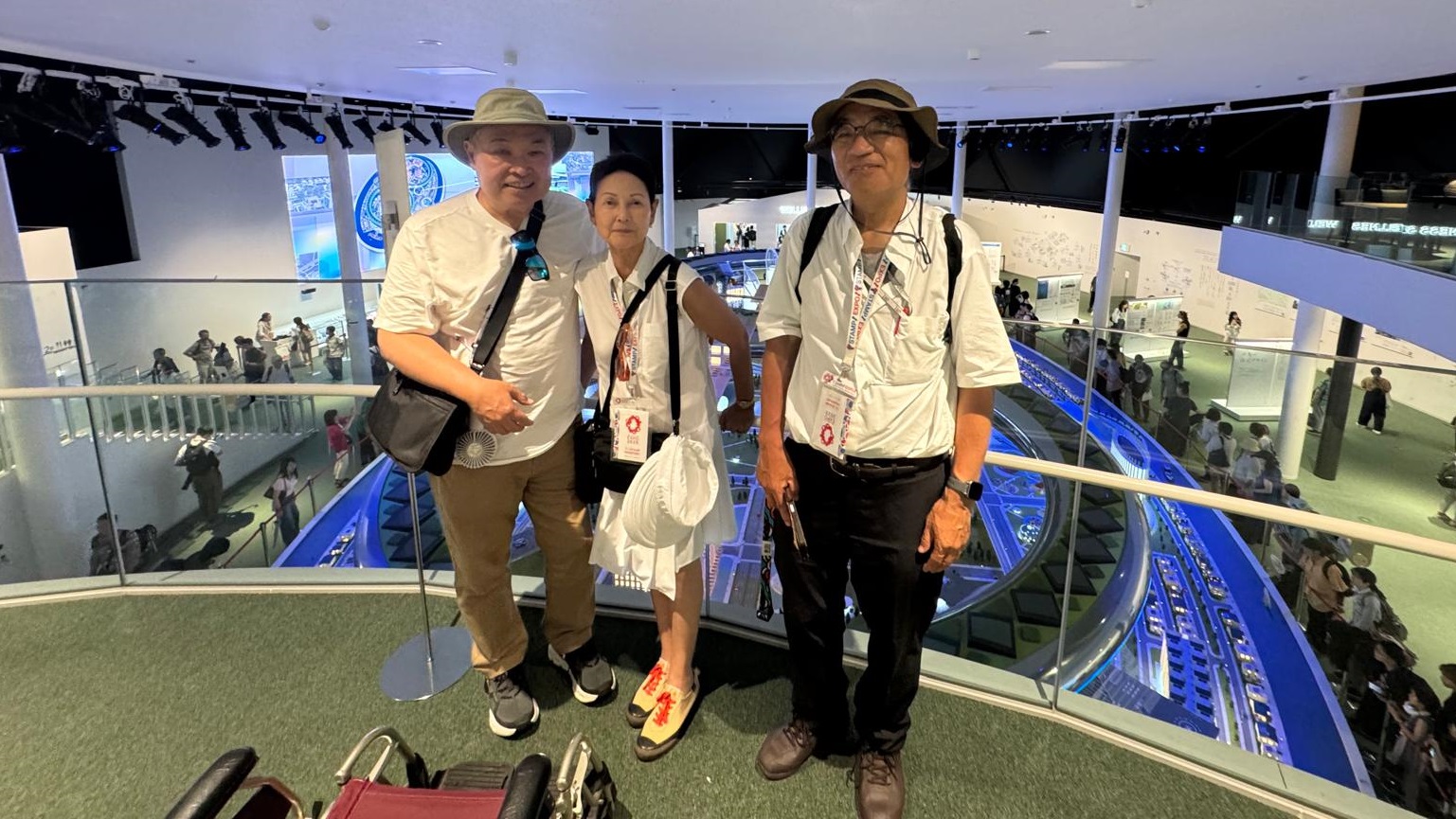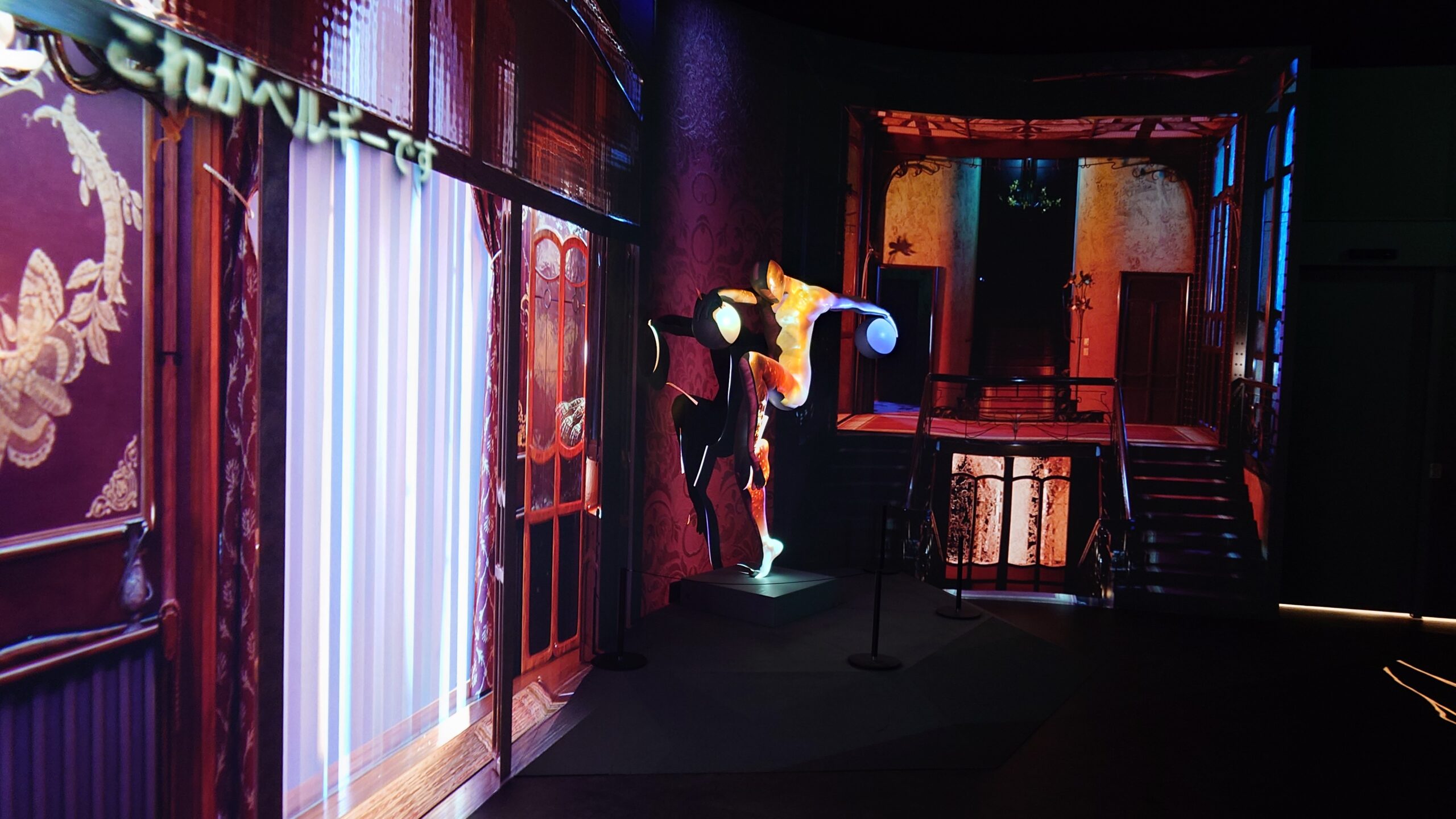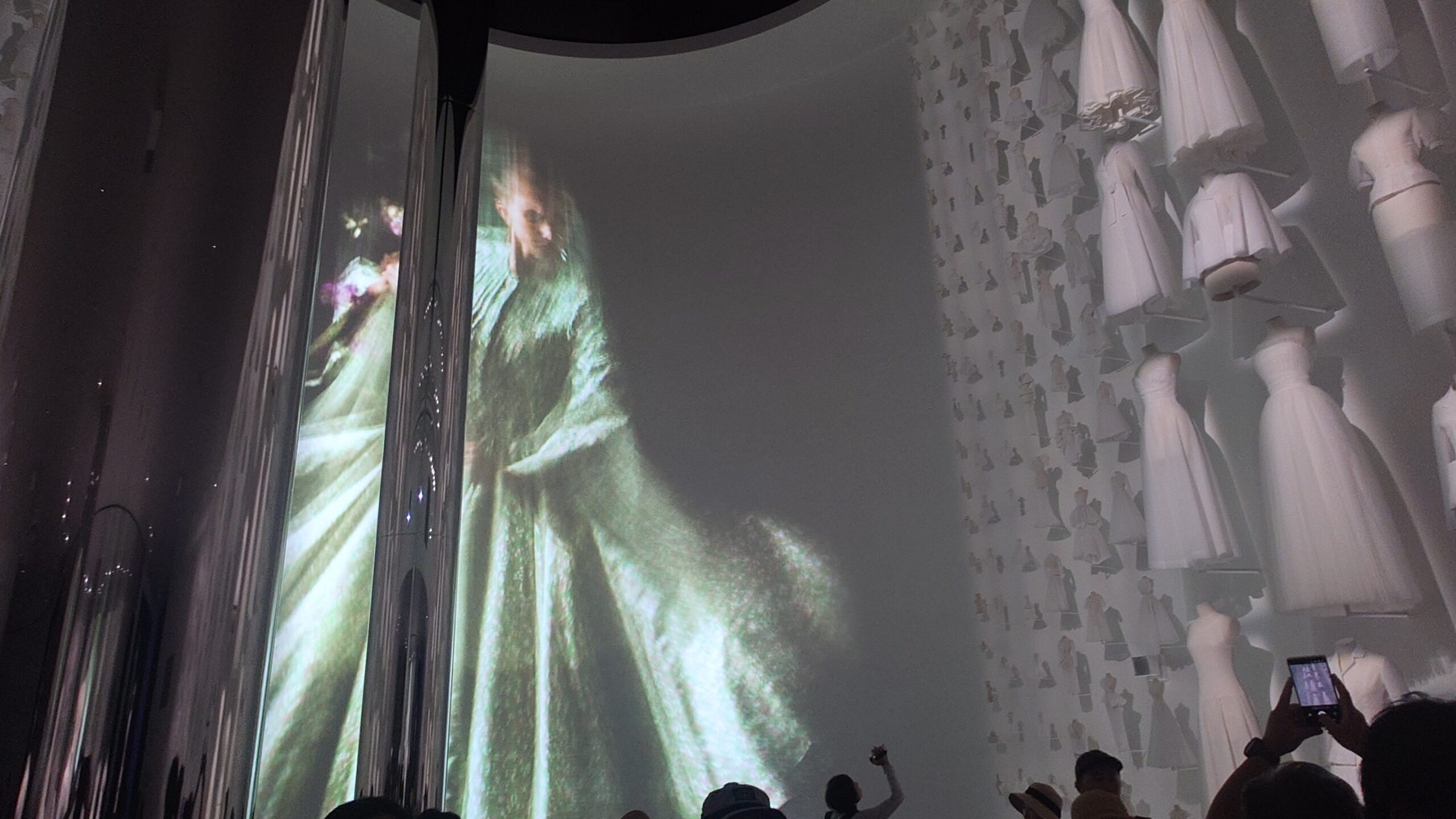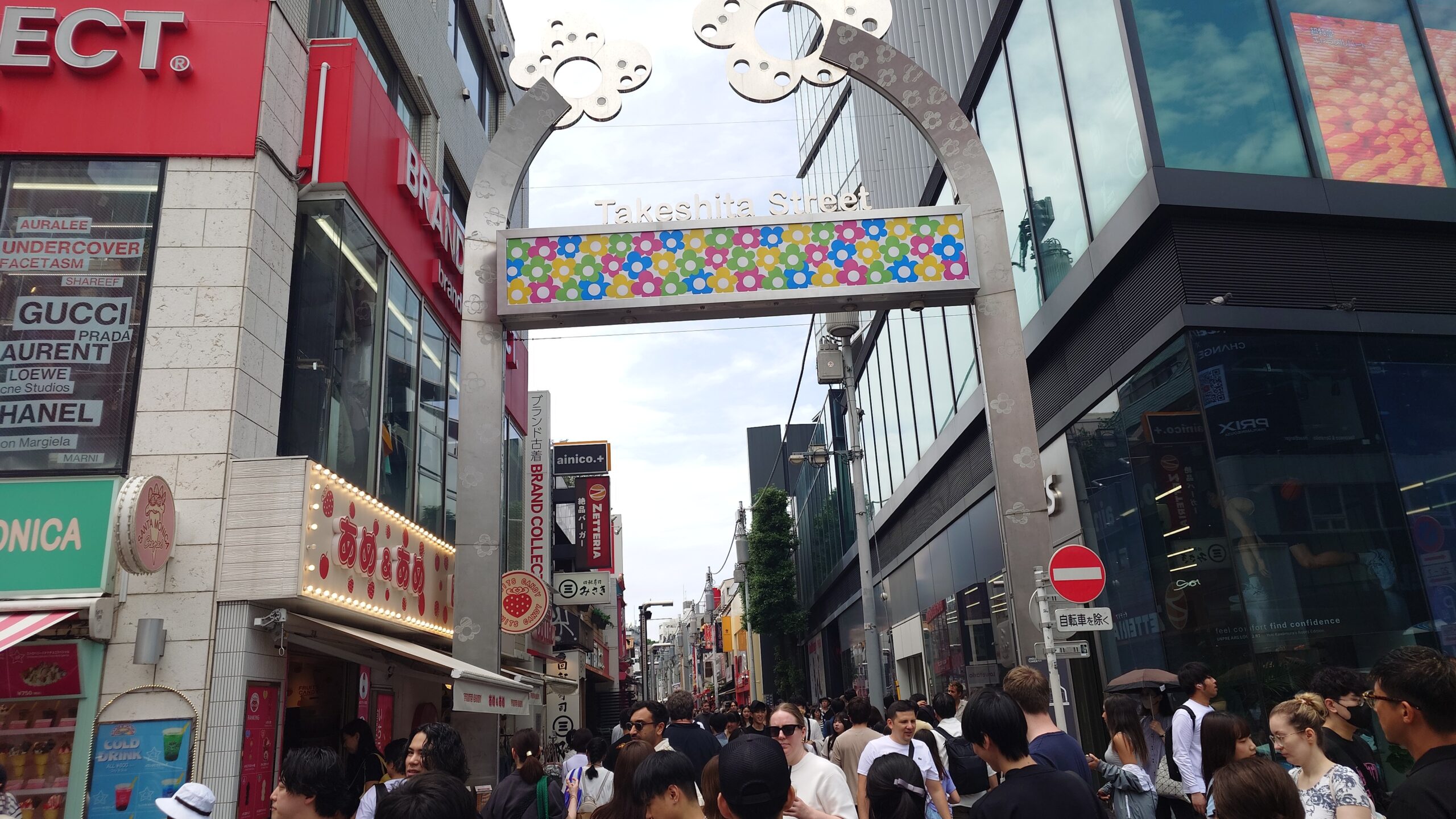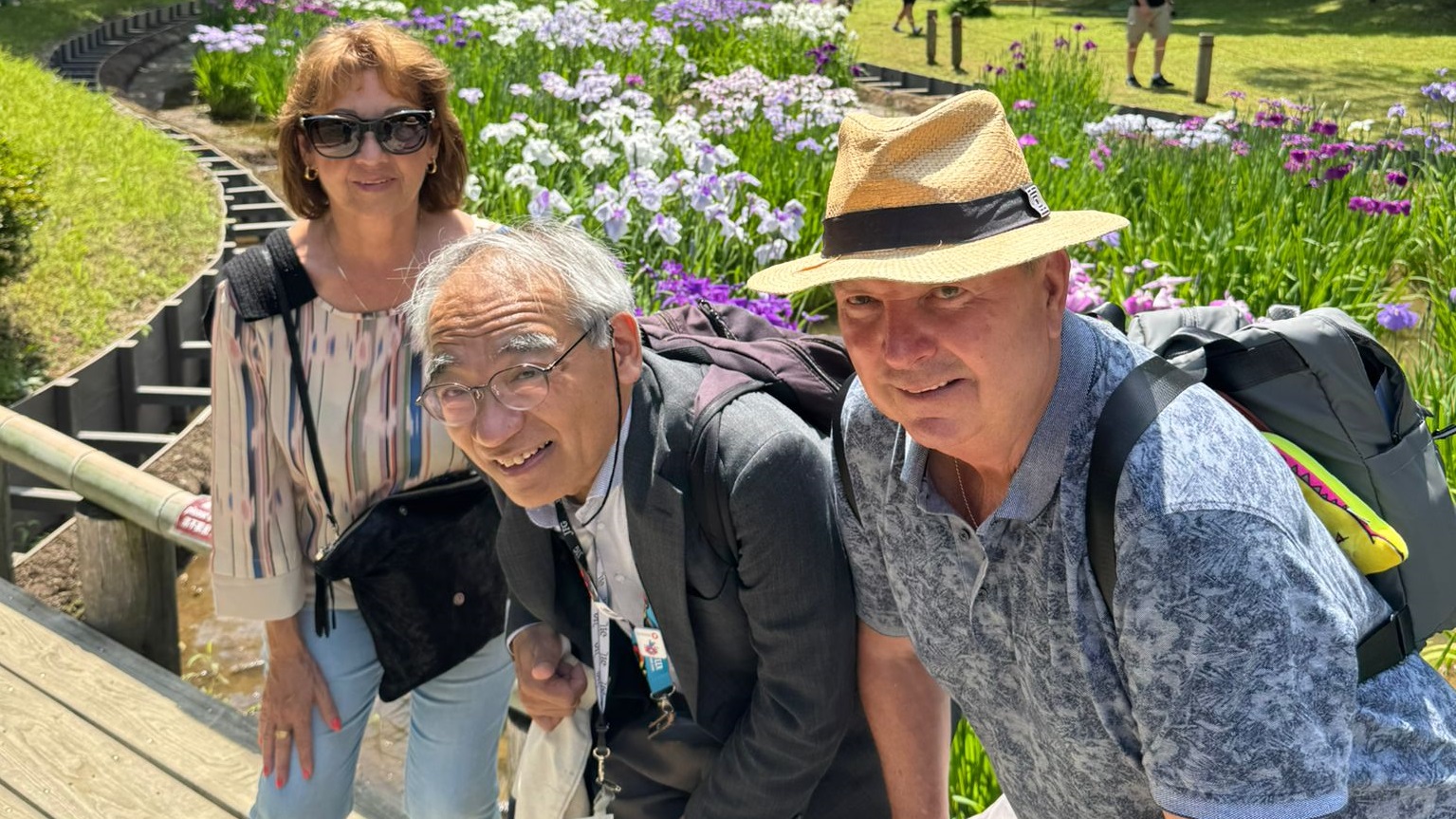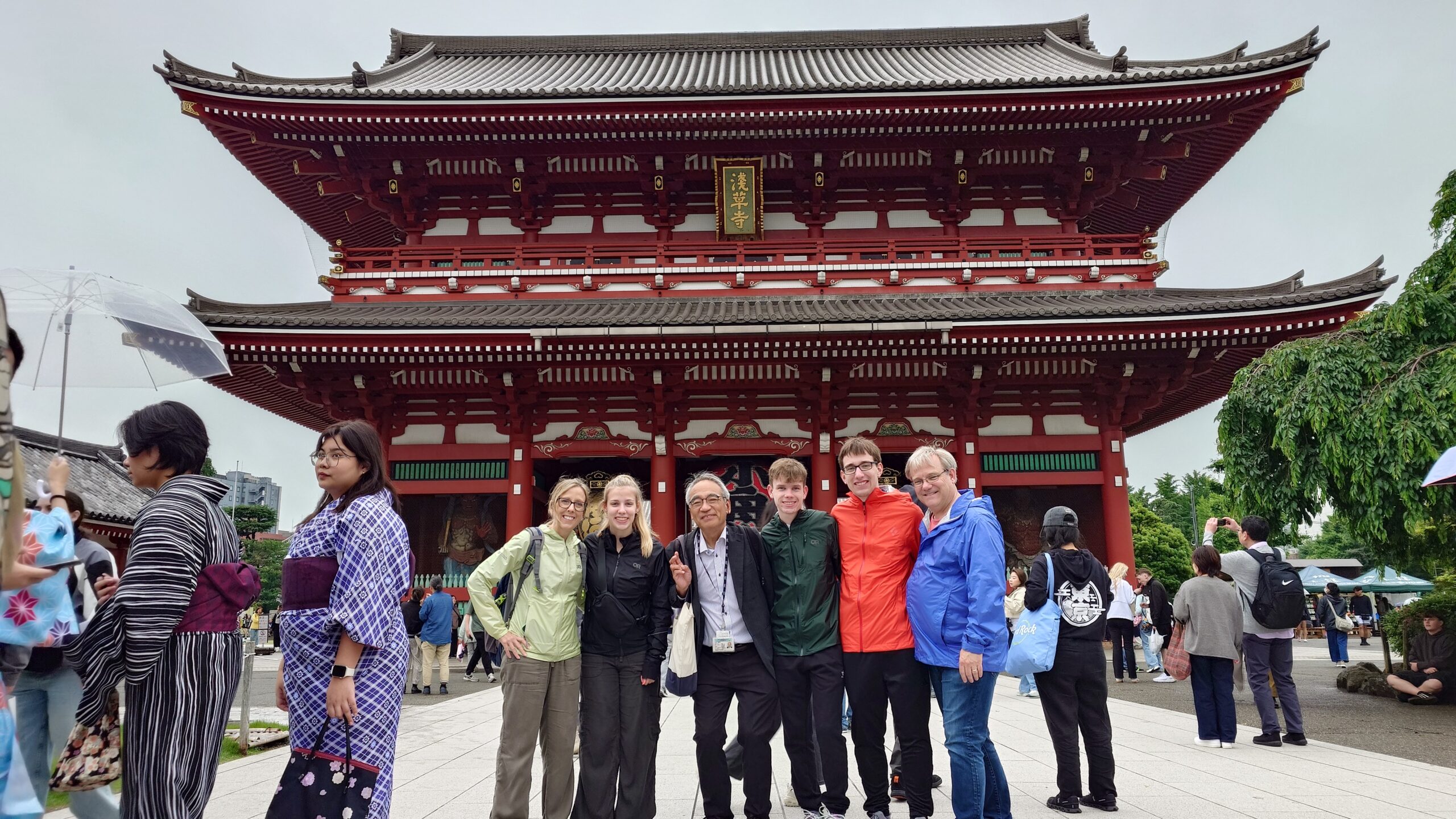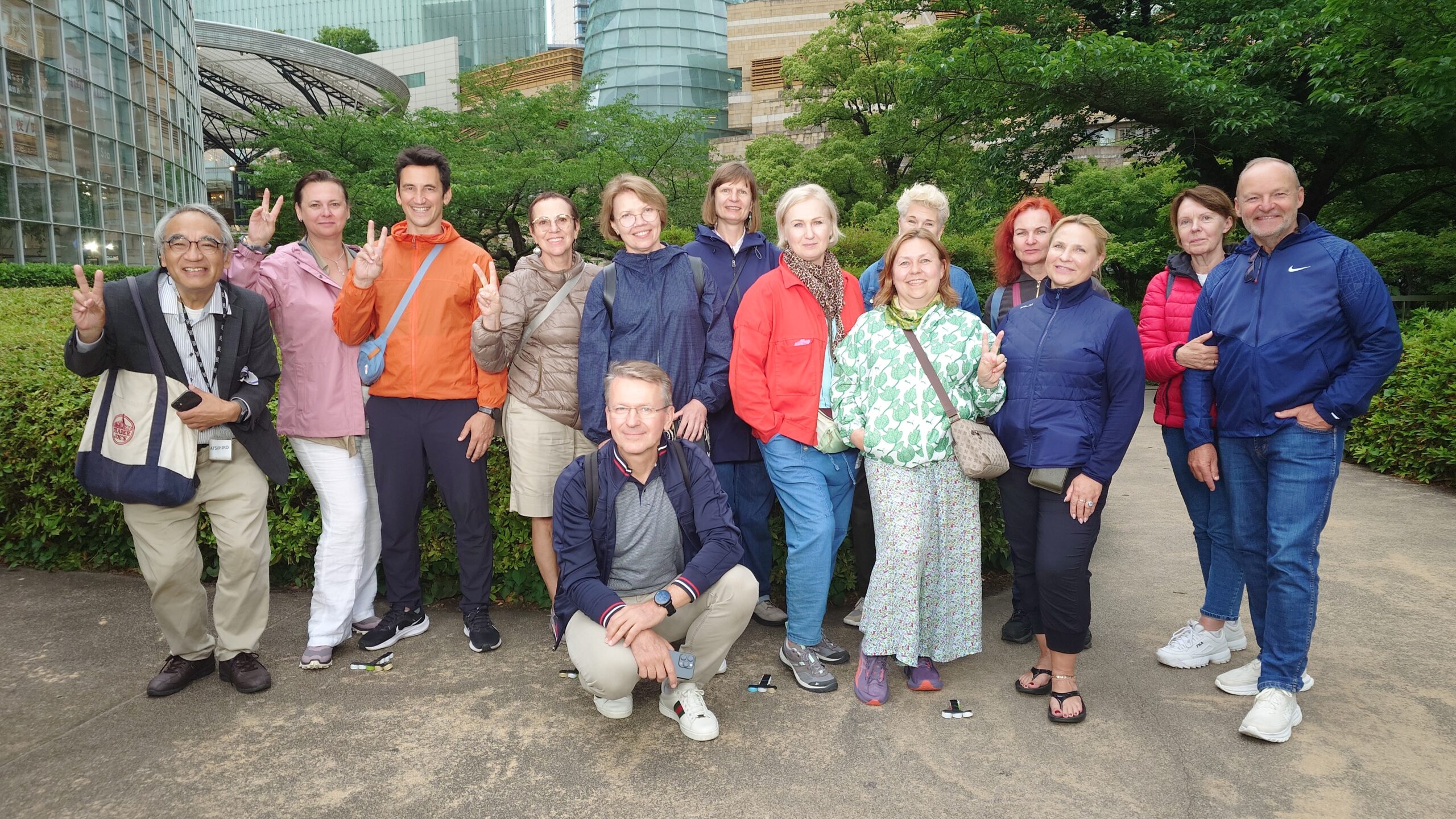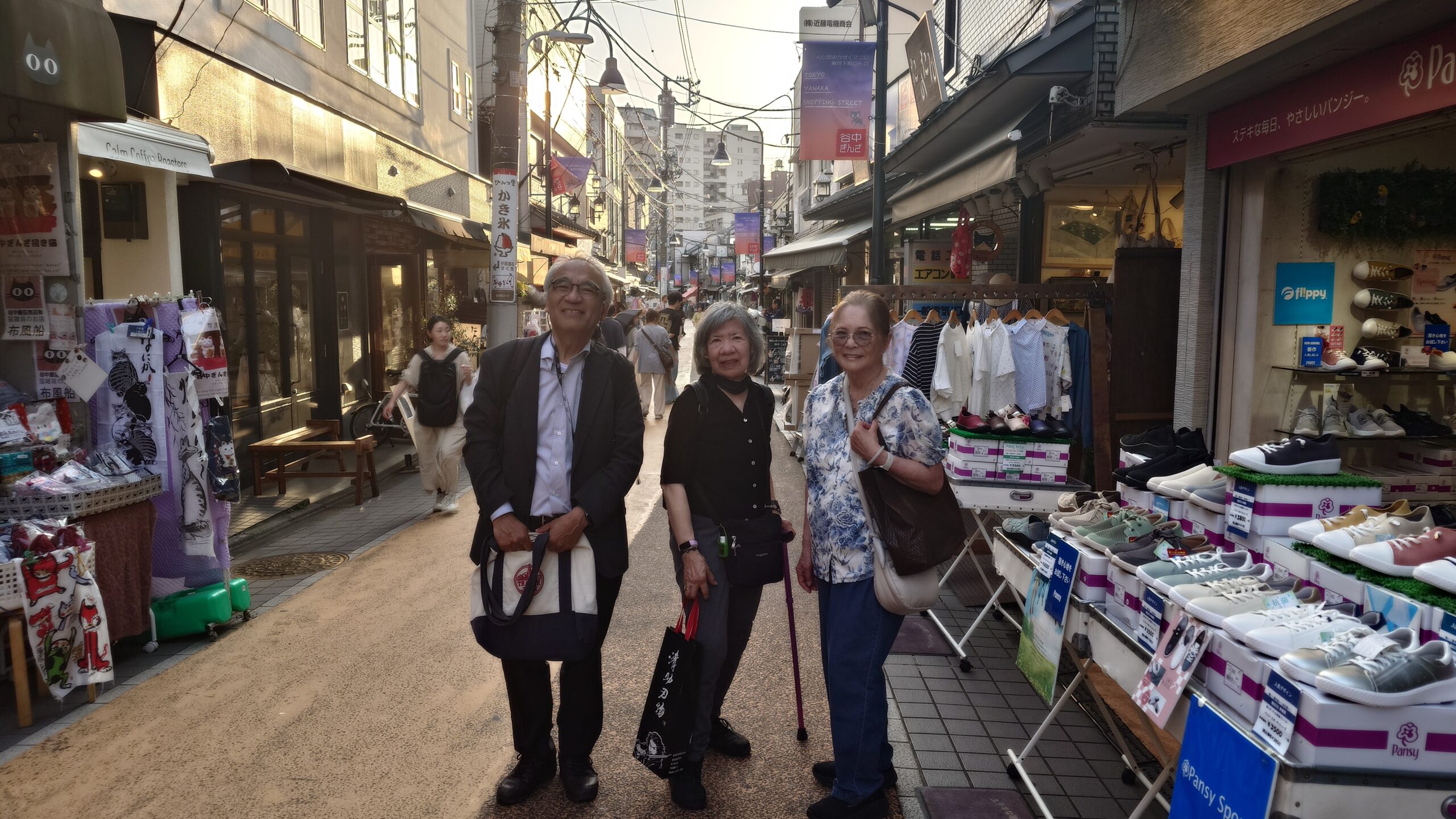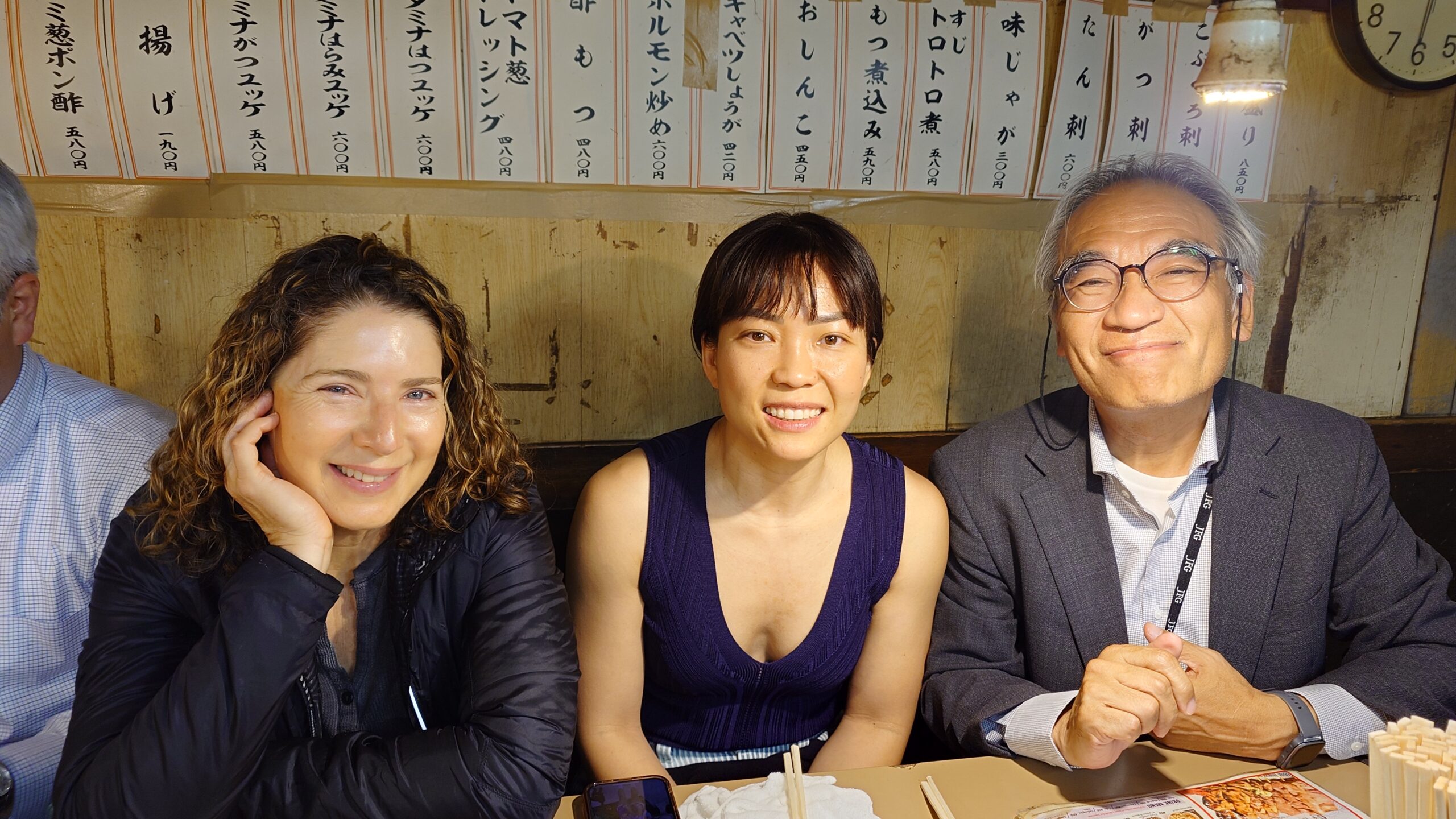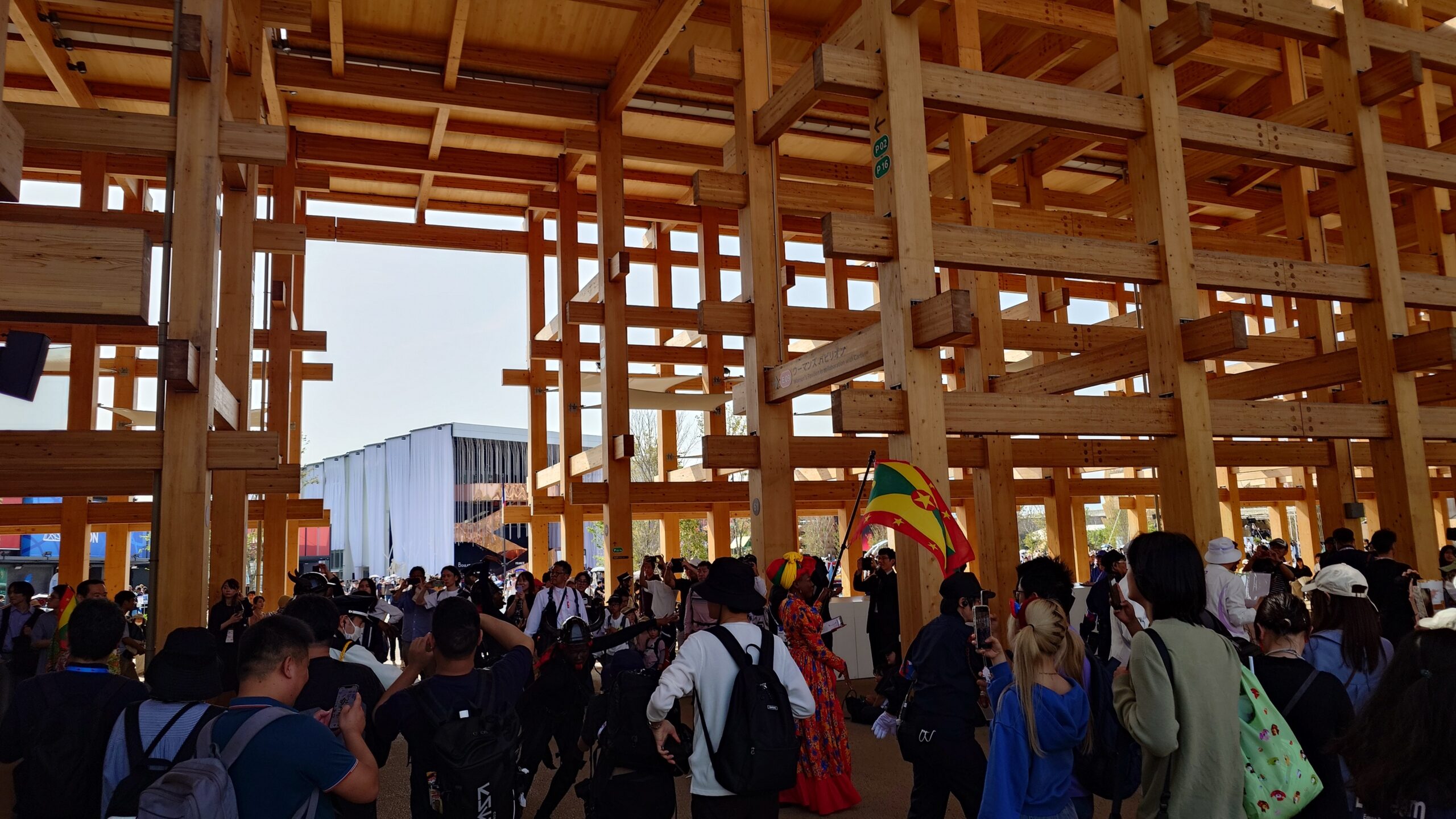Second day of guiding Canadian guests to the Osaka Kansai Expo 2025
Date: 11th July 2025
The second day of guiding the Expo, I had tried to reserve a direct shuttle bus from the hotel terminal to the West Gate of the Expo, about a month before when I received the booking from my guest, but the bus at a convenient time was already full. For this reason, I was thinking of taking a train from the hotel to Sakurajima Station and then a shuttle bus from there. In other words, I was planning to go to the West Gate by reversing the route we took on the first day.
When I told my guest about this, the husband of the guest said that he was a little tired on the return journey after changing trains on the first day, and wanted to take a taxi from the hotel. Also, when watching the morning news on the 11th, I learned that the spectacle of air and water show, which had been suspended for over a month due to water quality issues, would be resumed. Until the day before, we thought the water show would remain suspended, so our guest also planned to leave the venue a little earlier than on the first day and have dinner near the hotel.



For this reason, we decided to change our plans for the second day a little and stay at the venue until the water show ended at around 8pm, then return to the hotel area as soon as possible. While we were talking, the taxi driver suggested that if we came as a hire car at 8pm, he would wait for us closest to the exit. We immediately accepted his suggestion and changed our plans.
We were taken by taxi to the same Accessibility Center at the West Gate as yesterday, and was able to enter efficiently again. Immediately after entering, I decided to line up at the Italian Pavilion, which we were unable to enter yesterday. We waited for about an hour even in the priority line outside for a while, since the Italian president just arrived at the pavilion in front of us.



Italian Pavilion
The pavilion is themed “Art regenerates Life,” and when you enter the building, which is modeled after the Colosseum, you will find sophisticated exhibits. You will be amazed by the breathtaking works of art, such as Caravaggio’s Entombment of Christ and Leonardo da Vinci’s drawing of the Atlantic Code. I had visited the Italian Pavilion in April, but it has become more and more popular since it is exhibiting more masterpieces such as Michelangelo’s sculpture “Resurrected Christ” and Venafro’s “Venus of Venice” in addition to the masterpieces of Caravaggio and Da Vinci that have been a hot topic since the opening.



I had visited the Italian Pavilion in April, but it has become more and more popular since it is exhibiting more masterpieces such as Michelangelo’s sculpture “Resurrected Christ” and Venafro’s “Venus of Venice” in addition to the masterpieces of Caravaggio and Da Vinci that have been a hot topic since the opening.



After that, I went to the French Pavilion, which I was unable to enter due to an accident the previous day, and was able to enter with almost no waiting by using the Fast pass that the staff of the American Pavilion had sent us the day before.
France Pavilion



The theme of the France Pavilion is a hymn to love. The symbolic red thread represents the connection between France and Japan, and the theme of love expresses “Loving yourself,” “Loving others,” and “Loving nature.” As a fashionable country, there are stylish exhibits of Louis Vuitton and Christian Dior, which represent France, as well as exhibits of 1,000-year-old olive trees, wine, and grapes, as an agricultural country.



Afterwards, we went to the Canada Pavilion, the guest’s home country. The guest could enter the pavilion using the priority wheelchair lane, and at various points, the guest enjoyed the pavilion’s exhibits while chatting with Canadian staff. In particular, when the images of Niagara Falls and the familiar cityscape of Toronto were shown, the guest seemed very happy as he explored the interior.
Canada Pavilion
The concept of the Canada Pavilion is “Regeneration”, when winter turns to spring. It is inspired by the thawing of frozen waterways at the onset of spring. Visitors enter the pavilion holding a special monitor, which they hold up to the glacier inside the building, and various videos are displayed on the monitor, making them feel like they are traveling around Canada.
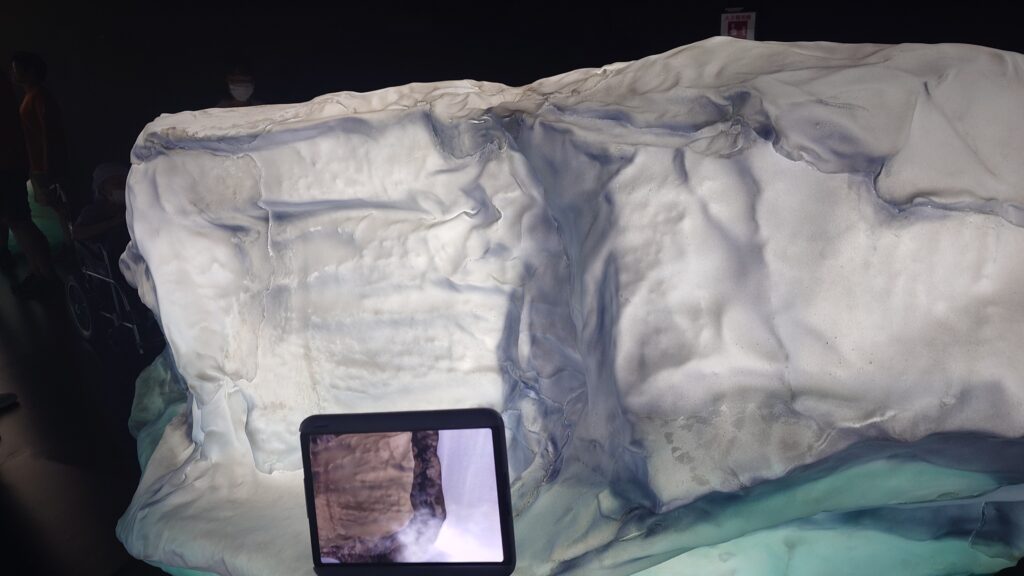
When I asked the guest what they would like for lunch on the second day, they said they would like a place with convenient air conditioning where they could eat leisurely, even if it was a little expensive, so I introduced a relatively empty restaurant that featured Kobe beef sukiyaki bowls, although it was a little expensive, and we were able to have a relatively leisurely lunch.
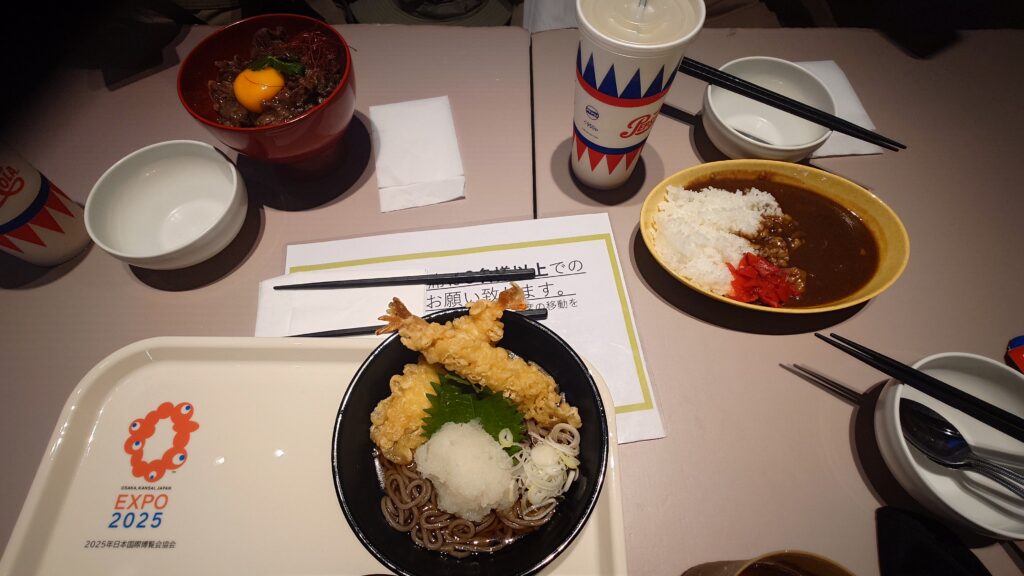
Afterwards, we went to the Signature Pavilion, DYNAMIC EQUILIBRIUM OF LIFE, for which I had made a reservation in advance. When I checked at the entrance, I was told that although I had made a reservation for three people during the advance reservation process, the guest’s reservation had not been registered and there was only space for one person on my ticket. However, as the guest’s husband had come in a wheelchair, he was able to use the one-person slot while his wife accompanied him, so I let them both enter the pavilion and I decided to wait outside. It became clear that this reservation system for multiple people was complicated and difficult to operate.
DYNAMIC EQUILIBRIUM OF LIFE
This pavilion, with its dynamic equilibrium as its keyword, tries to hand over a philosophy to redefine life for a better society and the future of the Earth. There is actually no clear boundary between you and the environment. The atoms and molecules that makeup you are constantly being exchanged with the environment. The pavilion will deliver an experience that will shake your view of life to its very core and rediscover the meaning of life and hope.
After that, we tried to enter the Japan Pavilion, but I was told that visitors without reservations would have to make a waiting line after 19:00 to enter the pavilion. Visitors in wheelchairs could line up at the front of the waiting line if they came to the pavilion before 19:00, but since entering after 19:00 would mean we would not be able to see the spectacle of air and water show, we decided not to enter.
Also, as thunderclouds were approaching the venue, we moved around using the Great Ring as much as possible, and went around several small pavilions in several Commons buildings, waiting for the water show to start. Although visiting the pavilions in the Commons felt like sheltering from the rain and killing time, the wife of the guest was quite enthusiastic about collecting stamps in her stamp book, so I’m glad I bought a stamp book first.



We secured a spot on the west side so that we could immediately exit through the west gate after the water show, and were able to enjoy the show that had resumed after a long time. We headed to the gate immediately after the show ended, but I realized that it was quite difficult to push a wheelchair in a crowded place. However, the drone show started immediately after the light and water show, so while many people stopped to watch it, we headed straight to the gate, and were able to exit relatively smoothly. And the taxi driver who took us from the hotel to the Expo site in the morning was waiting for us at the most convenient hire car stand, so we were able to leave the site really quickly. I was really lucky to leave the venue at around 8:15 and get back to my hotel near Namba Station just after 8:30.
Although it was just a coincidence that a private taxi driver suggested it, we were able to get back to the hotel extremely smoothly, so my guests were delighted and as a guide, I was relieved. Many things happened during the two days of guiding, but what made me happiest was seeing my guests happy, and I feel like I was able to make at least a small contribution to the Expo in my hometown of Osaka.
This tour was organized through Tours by Locals.
Review from the guest posted to Tours by Locals
Excellent tour guide! Atsuhiro was sensitive to our needs and interests. He gave us insights into what makes being Japanese so unique. We had the advantage of his world wide knowledge and insights, having worked in Europe, SE Asia, Africa, and the Middle East. This made our trip to Expo 2025 even more interesting and rewarding. If I could, I would give him 7 stars!
